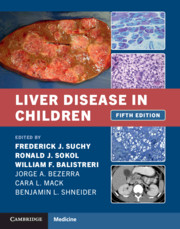104 results
Antibiotic prescribing for acute respiratory infections during the coronavirus disease 2019 (COVID-19) pandemic: Patterns in a nationwide telehealth service provider
-
- Journal:
- Infection Control & Hospital Epidemiology / Volume 45 / Issue 6 / June 2024
- Published online by Cambridge University Press:
- 08 February 2024, pp. 777-780
- Print publication:
- June 2024
-
- Article
-
- You have access
- Open access
- HTML
- Export citation
Describing current use, barriers, and facilitators of patient portal messaging for research recruitment: Perspectives from study teams and patients at one institution
-
- Journal:
- Journal of Clinical and Translational Science / Volume 7 / Issue 1 / 2023
- Published online by Cambridge University Press:
- 05 April 2023, e96
-
- Article
-
- You have access
- Open access
- HTML
- Export citation
SkyHopper mission science case I: Identification of high redshift Gamma-Ray Bursts through space-based near-infrared afterglow observations
-
- Journal:
- Publications of the Astronomical Society of Australia / Volume 39 / 2022
- Published online by Cambridge University Press:
- 05 August 2022, e032
-
- Article
-
- You have access
- Open access
- HTML
- Export citation
Mediators and moderators in the relationship between maternal childhood adversity and children's emotional and behavioural development: a systematic review and meta-analysis
-
- Journal:
- Psychological Medicine / Volume 52 / Issue 10 / July 2022
- Published online by Cambridge University Press:
- 22 June 2022, pp. 1817-1837
-
- Article
-
- You have access
- Open access
- HTML
- Export citation
Parental education and youth suicidal behaviours: a systematic review and meta-analysis
- Part of
-
- Journal:
- Epidemiology and Psychiatric Sciences / Volume 31 / 2022
- Published online by Cambridge University Press:
- 30 March 2022, e19
-
- Article
-
- You have access
- Open access
- HTML
- Export citation
Section I - Pathophysiology of Pediatric Liver Disease
-
- Book:
- Liver Disease in Children
- Published online:
- 19 January 2021
- Print publication:
- 18 March 2021, pp 1-106
-
- Chapter
- Export citation
Section IV - Metabolic Liver Disease
-
- Book:
- Liver Disease in Children
- Published online:
- 19 January 2021
- Print publication:
- 18 March 2021, pp 401-709
-
- Chapter
- Export citation
Index
-
- Book:
- Liver Disease in Children
- Published online:
- 19 January 2021
- Print publication:
- 18 March 2021, pp 833-862
-
- Chapter
- Export citation
Section V - Other Considerations and Issues in Pediatric Hepatology
-
- Book:
- Liver Disease in Children
- Published online:
- 19 January 2021
- Print publication:
- 18 March 2021, pp 710-832
-
- Chapter
- Export citation
Section III - Hepatitis and Immune Disorders
-
- Book:
- Liver Disease in Children
- Published online:
- 19 January 2021
- Print publication:
- 18 March 2021, pp 273-400
-
- Chapter
- Export citation
Contributors
-
- Book:
- Liver Disease in Children
- Published online:
- 19 January 2021
- Print publication:
- 18 March 2021, pp vii-x
-
- Chapter
- Export citation
Section II - Cholestatic Liver Disease
-
- Book:
- Liver Disease in Children
- Published online:
- 19 January 2021
- Print publication:
- 18 March 2021, pp 107-272
-
- Chapter
- Export citation
Copyright page
-
- Book:
- Liver Disease in Children
- Published online:
- 19 January 2021
- Print publication:
- 18 March 2021, pp iv-iv
-
- Chapter
- Export citation
Contents
-
- Book:
- Liver Disease in Children
- Published online:
- 19 January 2021
- Print publication:
- 18 March 2021, pp v-vi
-
- Chapter
- Export citation
Preface
-
- Book:
- Liver Disease in Children
- Published online:
- 19 January 2021
- Print publication:
- 18 March 2021, pp xi-xii
-
- Chapter
- Export citation

Liver Disease in Children
-
- Published online:
- 19 January 2021
- Print publication:
- 18 March 2021
Acute respiratory infections in hospitalised infants with congenital heart disease
-
- Journal:
- Cardiology in the Young / Volume 31 / Issue 4 / April 2021
- Published online by Cambridge University Press:
- 14 December 2020, pp. 547-555
-
- Article
- Export citation
Precision Infection Prevention (PIP) as a New Standard of Practice Within Longitudinal Infection Prevention and Surveillance
-
- Journal:
- Infection Control & Hospital Epidemiology / Volume 41 / Issue S1 / October 2020
- Published online by Cambridge University Press:
- 02 November 2020, pp. s449-s450
- Print publication:
- October 2020
-
- Article
-
- You have access
- Export citation
FAST Performance in a Stationary versus In-Motion Military Ambulance Utilizing Handheld Ultrasound: A Randomized Controlled Study
-
- Journal:
- Prehospital and Disaster Medicine / Volume 35 / Issue 6 / December 2020
- Published online by Cambridge University Press:
- 26 August 2020, pp. 632-637
- Print publication:
- December 2020
-
- Article
- Export citation
The impact of childhood deprivation on adult neuropsychological functioning is associated with ADHD symptom persistence
-
- Journal:
- Psychological Medicine / Volume 51 / Issue 15 / November 2021
- Published online by Cambridge University Press:
- 18 May 2020, pp. 2675-2684
-
- Article
- Export citation
















